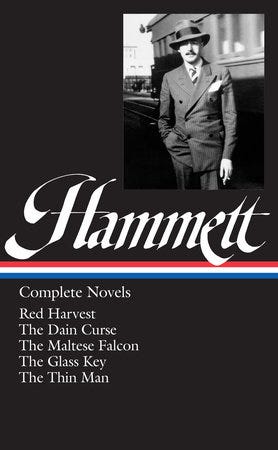Dear TCL Readers:
Going to keep this newsletter on the briefer side, what with it being a holiday week. Earlier this year, it was a great pleasure to be asked to write a companion essay to the Criterion Collection DVD edition of Claude Chabrol’s 1995 masterpiece La Ceremonie, starring Sandrine Bonnaire and Isabelle Huppert. I was truly blown away by how good the movie was, how stunning the performances were, and how Chabrol adapted and was in conversation with Ruth Rendell’s 1977 novel A Judgement in Stone, while making pointed observations about class warfare and female rage.
That essay is now online, and the DVD is available for purchase right here. A great many thanks to Liz Helfgott, Criterion’s managing editor, for thinking of me, and for the chance to write about this movie and specifically, the two women Chabrol once referred to as follows: “Jeanne is the vowel, Sophie the consonant.”
November’s Crime & Mystery column is also up, reviewing new books by Yulia Yakovleva, Stephen Mack Jones, and Juneau Black — based on the response so far, I think this series is well on its way to becoming a collective favorite — along with what looks to be the last of Jean-Patrick Manchette’s novels to be translated into English, Skeletons in the Closet (originally published in 1976 as Que d'os!)
The NYT also published its 100 Notable Books of the Year, including S.A. Cosby’s All the Sinners Bleed, Jessica Knoll’s Bright Young Women, Colson Whitehead’s Crook Manifesto, and in crime nonfiction, Anansi’s Gold by Yepoka Yeebo and A Thread of Violence by Mark O’Connell.
And I very much enjoyed my colleague Sarah Lyall’s profile of the spy novelist Mick Herron.
**
Also, for a variety of reasons, I’m rereading Dashiell Hammett. Novel verdicts so far: Red Harvest is a masterpiece. The Dain Curse is an unholy mess. The Glass Key is very good. The Maltese Falcon remains a classic example of an author failing to understand the power of his female characters, but I forgive him because everything else is still so good. And I’ll let the late, great Donald E. Westlake have the last word on The Thin Man:
When I first read The Thin Man there was this technique I’d never seen before and wouldn’t see again until Nabokov. A character who seems to be telling us one thing is actually telling us something quite different, even the opposite. He says he’s blithe and witty and content, but we know he’s lost and scared and very very sad. I’ve seen other writers who can do this three-dimensional thing, and I admire it tremendously.
I cannot think of anyone else who would make the connection between Nick Charles and Humbert Humbert (because clearly that’s who Westlake is talking about here) but having made that connection, I cannot unmake it.
That said, it’s a technique that Dorothy B. Hughes employed astoundingly well in In a Lonely Place, and “Dix Steele” resonates with the same tonal frequency as “Nick Charles”, too — sad, dissonant, rage-filled men who are at odds with the actual world around them. Nick drowns his feeings in alcohol and floats from party to party. Dix takes his feelings out, murderously, on women.
Westlake also once said that The Thin Man demonstrated how Hammett “is not leaving the hardboiled detective story. The genre is leaving him.” Enter Chandler, taking the “tough-guy lingo and smooth[ing] it into a kind of narrative poetry,” and then Hughes, an actual award-winning published poet, ready to mark the inflection point between the hardboiled fiction of pre-and-post WWII and the nervy, paranoid, domestic and international suspense that would follow in the 1950s and beyond.
Maybe that is the real genius of Hammett — whom, like Westlake, I also prefer to Chandler — that his work, even the lesser efforts, aren’t just good reads, but contain so much soil for what was to come in the genre. I read Hammett and make connections to the present, but also to the past. There is sadness, yes, and irony, but also an almost winsome beauty to the prose. No wonder so many writers emulate him, and feel compelled to do so.
**
Wishing you all a very happy Thanksgiving, and I’ll be back next week with another crime novel catch-up.
Until then, I remain,
The Crime Lady





The technique of writing one thing while telling the reader something else is indeed fascinating. To the examples above I would Kazuo Ishiguro's "The Remains of the Day", and also "An Artist of the Floating World". The first is narrated by a man who apparently cares only for formality and custom, but actually cares for someone else. The second is narrated by a man who feels guilt for betraying his mentor, and acts this out obliquely by apologising for his (tiny) part in Japan's wartime regime. Brilliant when it's done so well. I have tried to do this in a small way in some of my own writing, but it isn't easy.